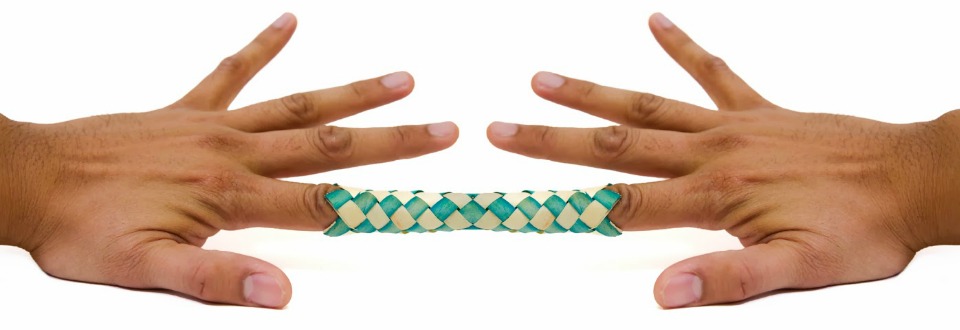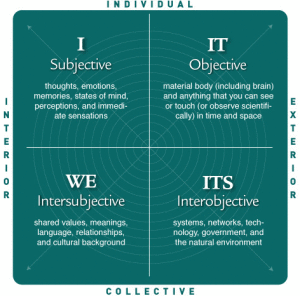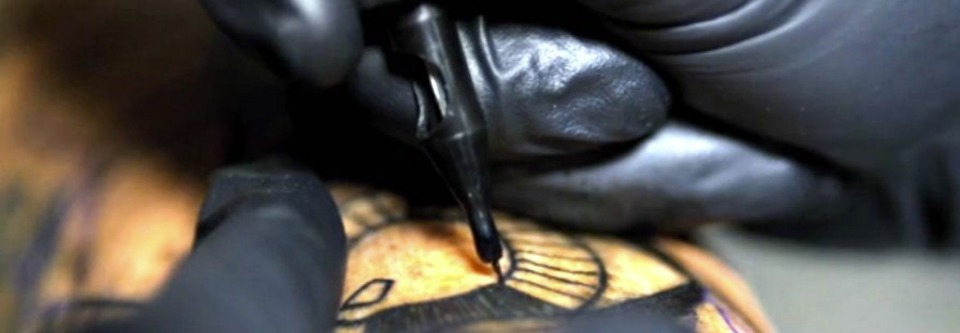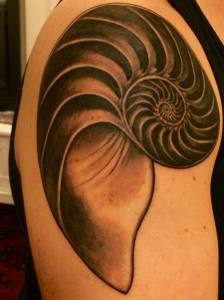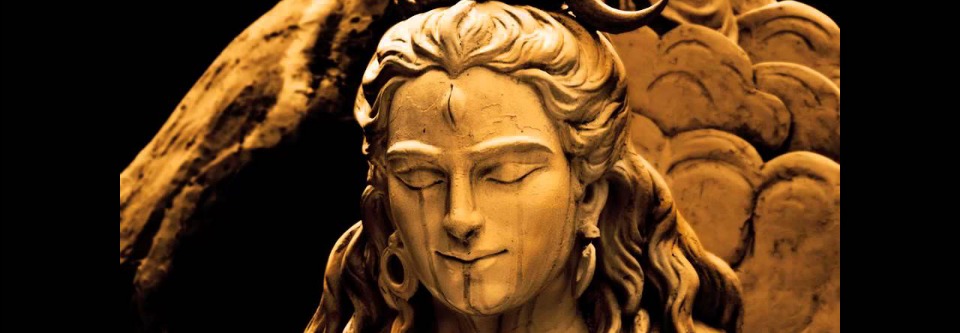The (Fourth) Voice of Sovereignty
Spiritual author Cynthia Bourgeault has written on a discernment process she has developed employing a conversation between what she calls the four voices, i.e. the four human identities of 1. ego/personality, 2. soul, 3. spirit, and 4. Heart. I follow the same basic four part scheme in my teaching, except that what Cynthia calls the Heart, I term The Sovereign (or Sovereignty). But essentially the perspective is the same.
I believe this fourfold teaching of the human being is a crucially important one for our time and age. I recommend reading Cynthia’s post in full (as well as this followup piece). There are a number of significant implications that develop from this basic fourfold scheme. Cynthia describes a very beautiful practice of letting each voice speak in turn in relationship to making a decision (aka discernment).
I want to extend this fourfold idea into some other domains.
The first and perhaps most important takeaway from this schema is that each of the four identities (or voices) has its own worldview. Each identity opens up a specific worldspace–it has a lens, a filter. Different phenomena arise depending on which identity is being accessed. In other words, different values, thoughts, feelings, and insights correspond with each of the four voices. Each identity brings its own world of experience. Each identity creates its own boundary of possible experience and understanding. Each identity is therefore a different world.
One of the extensions of this fourfold scheme that I’ve been working on is to think through essential teachings that derive from each of the four aspects of our being and learn a way to bring them together in a fundamental integrative human teaching. I’m going to explore this idea in greater detail below, but first we need to get a bit clearer on the four terms and to what identity each refers.
The ego or frontal personality is essentially a series of survival strategies. It’s not so much that the personality has various strategies. Rather the ego-personality is (for most people) those strategies. The ego/frontal personality is the aspect of us that we identify with it say at a party or business function. You meet someone for the first time you immediately introduce yourself by name. You both end up talking about where you grew up, what schools you went to, your job. Whether you’re married, divorce, single, have kids or not. The ego (or more simply the self) is the aspect of us that is born and will die. It also knows it will die. This aspect of us is highly conditioned. It has only a few go to moves and will always deploy them. Though even here we can grow into a deeper self maturity.
The soul (lowercase s) is the source of classic shamanic and animistic processes. The soul holds karmic and ancestral energies. The soul (lowercase s) is our connection to the psychic reality of Earth and the land. The soul is what carries forward lifetime to lifetime. The soul is the one who undertakes journeys to the otherworlds. The soul is what travels in our dreams and visions. The soul is the source of subtle energy, connections to angels, guides, deceased loved ones, saints, The Creator. It’s the realm of shadow work, exorcisms, and energy healings. It’s the domain of tarot readings, astrological connections, and the Akashic Records. Access your soul and these realities automatically start emerging. That is these realities exist in the worldspace the soul opens. They are not accessible, for example, by the ego (nor interestingly by spirit).
Spirit is our connection to the universal. Spirit is transpersonal. It is what is the same for all of us. Spiritual language is language of Unity, Oneness, Non-Separation. Spirit is the The One Without a Second. Spirit is Being Per Se. Spiritual teaching, spiritual enlightenment, and spiritual realization then all point us to the recognition of our spiritual nature and identity.
The Sovereign (or Sovereignty) is the aspect of us that integrates our self, our soul, and our spirit into one utterly singular unique expression. The Sovereign is the Flavor of our Incarnation. The Sovereign is a Master Weaver taking all of the aspects of our being, bringing them into our own manifestly distinct human being. The Sovereign weaves us each into an irreducible tapestry of being. The Sovereign is for each of us, the True Guide and Teacher of our being. The Sovereign is Infinity+1.
So with those four identities a bit more clarified, we can now turn to a way of simplifying and understanding the nature of various kinds of human practices. The basic premise here is that different practices are aimed at different voices/identities. For example, personal growth processes are aimed at the personality-ego. There are soul-based practices, e.g. shamanism. There are also teachings on the nature of spiritual awakening.
Each set of teachings is valid from within the bounds of the specific identity with which it works. Another way of saying that is that each set of teachings is true and yet partial. What true but partial means is that those teachings are not valid outside their area of legitimacy. For example it makes no sense to study personal growth techniques in order to about how to relate properly and lovingly to the souls of your ancestors. One is for the ego (personal development), the other is the work of the soul (the ancestors). Similarly it doesn’t help to study spiritual enlightenment in order to solve a psychological issue (that’s called spiritual bypassing).
In this way the four-identity or four-voice framework brings a great deal of clarity.
Working with a Tarot reading (soul) is not going to help optimize your email flow (personal growth/personality). An exquisite Tarot reading can however nurture your soul. Learning to meditate (spiritual teaching) doesn’t help your soul–in fact if you’re not careful it can actually teach you to bypass it. Optimizing your email flow also doesn’t teach you about the nature of your fundamental Consciousness. For that one you need spiritual teaching.
Knowing which identity a practice is oriented towards allows the practice to do what it does best and not be asked to do things it’s not designed to do. As Ken Wilber says practices and teachings are “freed up by being limited”.
An upshot of this meta-frame is that allows spiritual teaching to be relieved of the burden of having to solve all problems for all people all the time. It also restores the inherent value and proper place of soul work–which is often marginalized and/or outright denied in our day with its dominance of personal growth and spiritual teaching. This fourfold meta-perspective also creates a role for personal growth work in relationship to soul work and spiritual teaching that does not allow the personal growth side of things to co-opt soul and spiritual traditions as in much of the contemporary spiritual wellness lifestyle crossover scene (aka LOHAS).
That’s a first key piece coming out of this fourfold framework: seeing how to incorporate aspects from each of the three traditions in a harmonious, mutually supportive manner.
The second aspect is opening an entire new domain of practice and exploration: namely that of The Sovereign. I’m going to explore that rich topic in a later article.
But for now the key point is that when deploying this fourfold meta-frame, spiritual teaching ceases to be the end all be all. Personal growth ceases to be the highest value. Enacting your soul purpose (while crucially important) no longer takes priority of other aspects of being: like spiritual awakening or personal health.
The central learning is how to incorporate at least some of each of the three major traditions to create a basic integrative framework for human practice. By the principle of true but partial, each of these traditions is relativized (in the best sense). They are freed up by being limited.
In the ego-personality realm we have the traditions of psychotherapy, somatic bodywork, and personal growth.
In the soul realm we have energy healing traditions as well as shamanic practice, with all its multitudes of variations and diverse expression.
In the spiritual realm we have teachings of nondual awakening and realization.
We put all these traditions on a horizontal line. Therapy is not greater than nor lesser than spiritual enlightenment. Soul work is similarly neither greater than nor lesser than either psychotherapy nor spiritual awakening.
All need to work in harmony. Each has a specific piece of the puzzle that is unique to it: therapy, soul work, spiritual practice. No one of them can fill in the essential elements brought by the others. Spiritual teaching doesn’t help heal your ego. Working on healing your ego (in therapy) doesn’t teach how to realize your spiritual identity (as for example meditation teaches). Neither of those teaches you about the nature of you as a soul.
Ken Wilber writes that the problem is never partiality. The problem is always wholeness without partiality. When a spiritual teaching claims to be the final ultimate and only valuable teaching it’s preaching a wholeness without partiality, aka an ideology, a fundamentalism.
When however we recognize the partially true value of each of these streams we begin to ask how we can have them work together for the mutual benefit of all. We begin to ask the right set of questions: how do I begin to incorporate elements of ego-personality practice, soul work, and spiritual teaching into a cohesive, integrated process?
That question leads to a very fruitful line of inquiry to be lived. That question is the one I believe we need to be asking of ourselves and each other right now. How do we wisely include them all in their respective truths? That I believe is the one of the core benefits that an understanding of Sovereignty brings (the one that creates a big enough home for each.)


